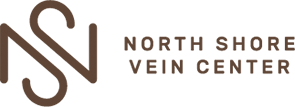Facial veins may not cause pain, but they often cause frustration. When red, blue, or purple lines start showing up across the cheeks, nose, or chin, it can affect how a person feels about their skin. These visible veins are common, especially with age, and many people seek treatment to restore a clearer complexion.
This blog will explore the different types of facial vein concerns, why they form, what symptoms to look out for, and which vein treatment options are most effective.
What Types of Facial Vein Issues Can Occur
“Spider veins” is a common name for facial veins. These damaged blood vessels sit just beneath the surface of the skin and can appear in red, blue, or purple hues. They often spread out like a web or branch pattern across the face.
Some patients also notice clusters of veins or thin lines that become more visible over time. While they do not typically cause discomfort, they may be linked to other vascular conditions. For many adults, especially those with fair skin, facial veins become more noticeable with age, sun exposure, or hormonal changes.
Most Common Causes and Symptoms
Facial veins can appear for several reasons, some of which are unavoidable. Genetics plays a major role. If a person has family members with visible facial veins, they are more likely to develop them, too.
Other contributing factors include:
- Sun exposure: UV rays can weaken capillaries, making them more visible.
- Aging: Blood vessels lose elasticity over time.
- Hormonal shifts: Pregnancy, menopause, and birth control can trigger changes in blood flow.
- Alcohol use: Frequent consumption may dilate facial blood vessels.
- Skin trauma: Injuries, extreme temperatures, or even a forceful sneeze can lead to broken vessels.
- Medical conditions: Rosacea and certain connective tissue disorders may increase risk.
In most cases, facial veins do not come with physical symptoms. However, some people may experience flushing, mild irritation, or cosmetic distress that prompts them to look for vein treatment.
Recommended Treatment Options
At North Shore Vein Center, we specialize in treating facial veins using safe, effective techniques designed for delicate skin.
The most common option for facial vein removal is laser therapy. This procedure uses targeted pulses of light to heat and seal the visible blood vessels. It requires no injections and typically involves minimal discomfort. Results vary depending on the size of the veins, but small ones may disappear immediately. Larger veins may take one to three months to fade.
Some patients benefit from intense pulsed light (IPL) therapy, which works similarly but uses a broader range of wavelengths. IPL can be ideal for treating multiple vein types at once. This method is also a good fit for people with recurring facial veins who may need touch-up sessions over time.
Unlike hand veins, which often require more invasive removal techniques, facial veins respond well to light-based treatments. Because the face is a high-visibility area, we use only the most precise tools to reduce the risk of side effects and help patients get back to their routines quickly.
Take Control of Facial Veins Today
Facial veins may be common, but they do not have to be permanent. We offer customized vein treatment plans at North Shore Vein Center that focus on comfort, safety, and visible results. Our team uses advanced laser systems designed specifically for sensitive facial areas so patients can feel more confident in their skin again.
If facial veins are affecting your appearance or self-esteem, schedule a consultation with our specialists.

